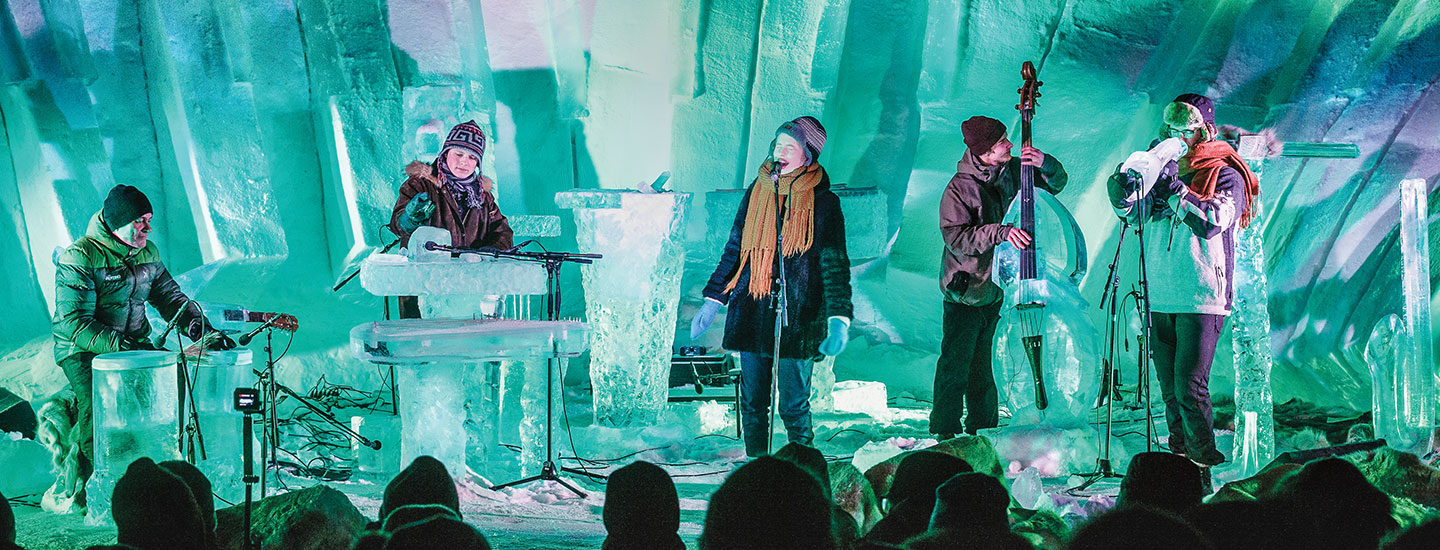JIM MCMAHON/MAPMAN®
Every February, hundreds of people from around the world travel to Finse, Norway, for a four-day music festival. Winter temperatures in the remote mountain village can dip well below freezing. But that doesn’t stop visitors from filling up an outdoor theater—they just bundle up and huddle together to keep warm. The visitors are willing to put up with the bone-chilling conditions to hear a series of special concerts performed on instruments made of ice.
Every February, hundreds of people from around the world head to Finse, Norway. They travel to this remote mountain village for a four-day music festival. Winter temperatures there can dip well below freezing. But visitors still fill up an outdoor theater. They just bundle up and huddle together to keep warm. The visitors are willing to put up with the freezing cold to hear a series of special concerts. The music is performed on instruments made of ice.

